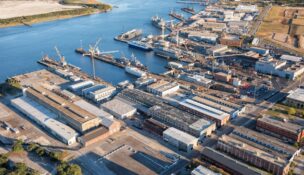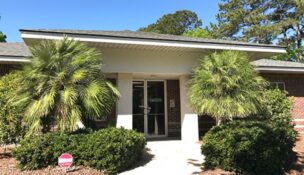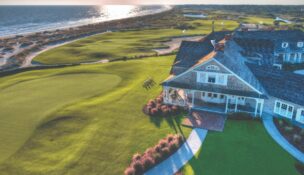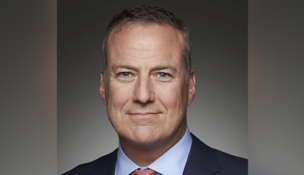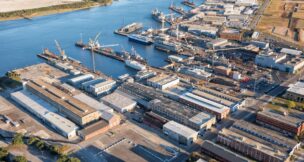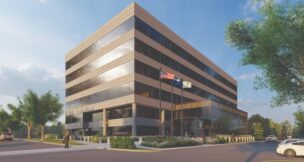Prime waterfront property in Charleston to be sold — here’s what’s next
Jenny Peterson //November 25, 2022//
Prime waterfront property in Charleston to be sold — here’s what’s next
Jenny Peterson //November 25, 2022//
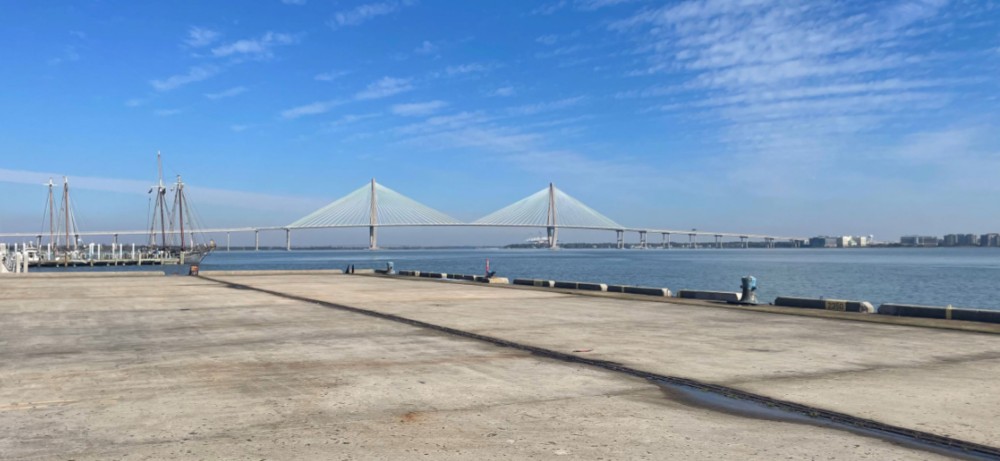
The South Carolina Ports Authority plans to put its 70-acre prime waterfront property in downtown Charleston up for sale — but not without a master plan attached to it that will guide development and offer unparalleled waterfront access to Charleston residents and visitors.
Situated between Market Street and Joe Riley Waterfront Park with its famed Pineapple Fountain, the Union Pier property consists of 40 acres of high ground and 30 acres of piers and marshland with expansive views of the Mount Pleasant shoreline and the Ravenel Bridge across the Charleston Harbor.
“We have a once-in-a-lifetime opportunity to reimagine our waterfront and take full advantage of this iconic asset,” the port states.
The Ports Authority is holding a series of public meetings to get feedback and community input on the master plan.
Potential uses for the Union Pier include creating a continuous waterfront promenade from the existing Waterfront Park with public parks and walkways, waterfront access, shopping, restaurants, parking areas, hotels, affordable housing and event space at the cruise line terminal on the property.
While the Union Pier was a bustling port in the late 1800s, it hasn’t seen much action since the 1950s. It is currently being used for breakbulk cargo and as a home port and terminal for the Carnival Cruise Line.
Starting in 2024, Charleston will no longer be a home port for the Carnival Cruise Line and will only be a port of call, meaning a stop for tourists to disembark for the day. The large parking lot used by cruise passengers at the Union Pier will no longer be needed.
Creating a master plan before listing the property for sale has several benefits: first, it allows the Ports Authority to be good stewards of prime real estate on the Charleston peninsula; second, it allows the Ports Authority to list it at a higher sale price, according to developers.
With a master plan, all the due diligence and entitlements are already done, including zoning and surveys of existing structures and piers, said Jacob Lindsey, with Lowe, a private real estate company contracted by the Ports Authority to do property entitlements for the master plan.
Lowe recently embarked on the high-profile development of The Cooper Hotel near the Union Pier, which is also set to have a public waterfront promenade.
“The total property value (of the Union Pier)? The answer is nobody knows,” Lindsey said at a recent public meeting to collect community feedback. “You’d have to demolish piers, you have to build a giant park, everyone will value it differently and if the markets are in a good position, it can be worth a lot. It’s a big unknown now but the market will dictate it.”
A Tax Increment Financing (TIF) revenue agreement will almost certainly be attached to the property, Lindsey said, which would allow developers to use taxes paid on the property to pay for infrastructure improvements, making the sale even more valuable.
Lindsey said Lowe has been offered first right of refusal from the Ports Authority as a buyer and developer of the Union Pier.
“There will be a bid process and we can look at the bids and have the first right of refusal. We hope to be owners, but with a trophy property like this, it’s highly likely that we will be outbid,” Lindsey said.
Combined with extensive community feedback from public meetings and approval of the master plan by the city of Charleston, the ports’ timeline to put the property up for sale is late 2023 or early 2024.
“We will sell it for the highest and best use,” the Ports Authority states. “The revenue from the sale will help fund critical port infrastructure projects for SC Ports — such as phases two and three of Leatherman Terminal — ensuring a fluid supply chain for port-dependent businesses throughout South Carolina and beyond.”
In addition to public waterfront access, there are other lofty goals and transformational opportunities for the Union Pier property, including improving flooding and protecting the area from storm surge. Tide gates, a living shoreline and other flooding protections were proposed at public meetings.
Aesthetically, master plan options include creating alleyways to mimic Charleston’s street style and extending current streets leading to the property — Society, Laurens, Hasell and Pinckney streets — to the water’s edge of the development in order to “blend seamlessly with the fabric of Charleston.”
“As an urban designer, there are things that I feel are very fundamental, including extending the historic street grid onto the site and making connections with walkability,” said Cassie Branum, a principal in urban design with Perkins & Will, an architecture, planning, and landscape design firm contracted to help with the master plan. “It takes a team a long time to come up with a master plan; we’ve been learning about the area’s history, meeting with the city of Charleston and stakeholder groups.”
While the master plan will dictate what type of development is allowed and where development will go, the city of Charleston’s Board of Architectural Review will maintain authority over the design of the buildings and amenities, Lindsey said.
Development on the property is at least five to seven years out with a full buildout between 10-30 years, Lindsey said.
“The Ports Authority could have just sold the property with the base zoning on it and there would be no master plan with green spaces or anything else,” Lindsey said. “With this route, the community sees the plan, the planning commission and city council vote on it, and everything in the plan is attached to it — affordable housing requirements, off-site improvements, roadway improvements — all of that will be wrapped into the master plan and adopted by city council.”
To learn more, visit www.unionpiersc.com.
t







